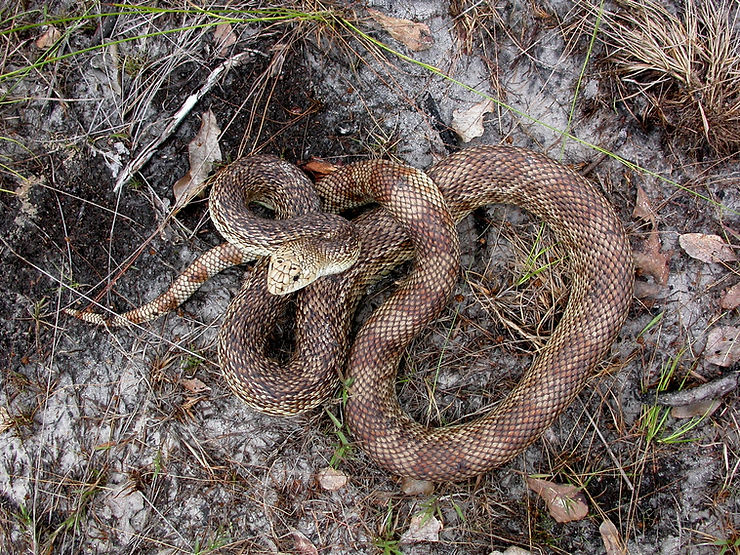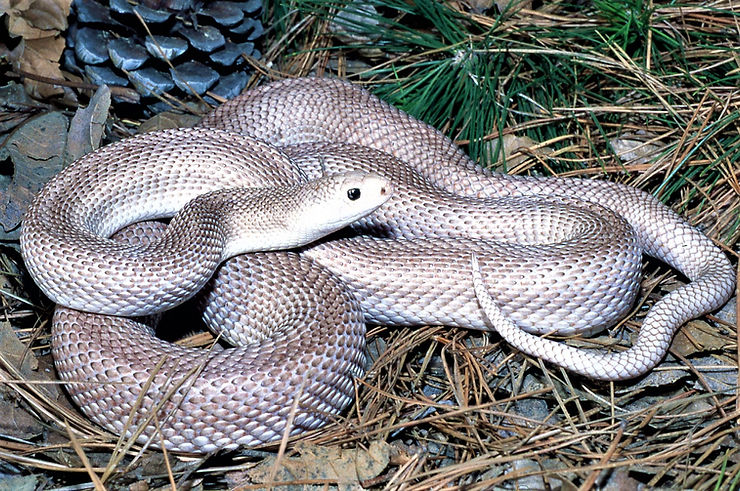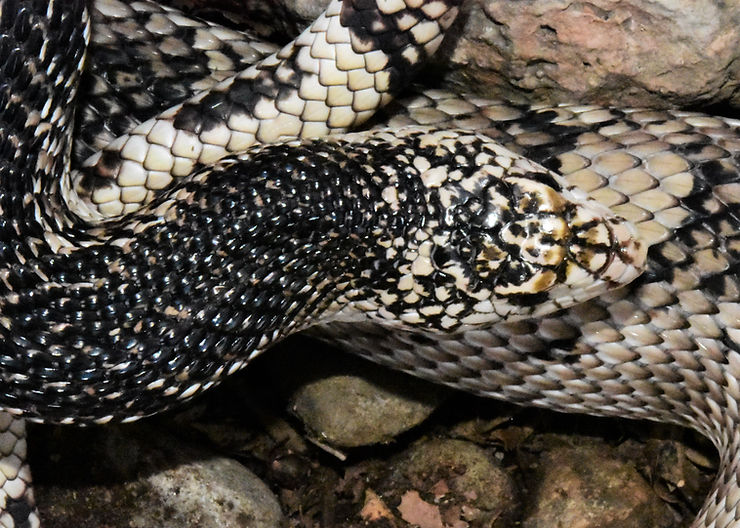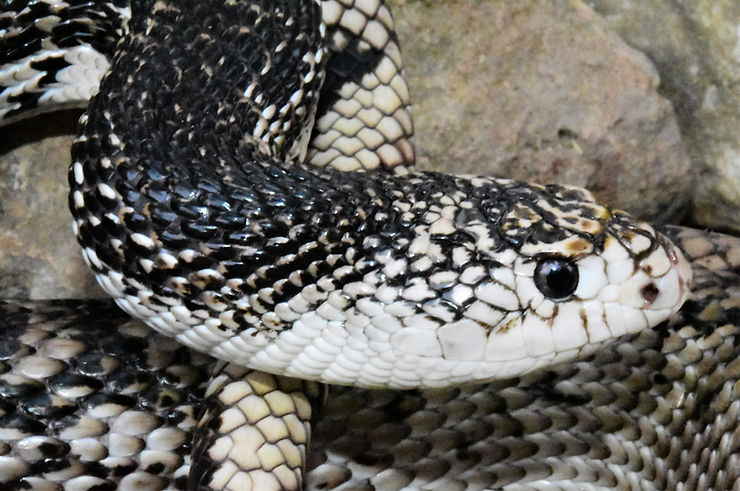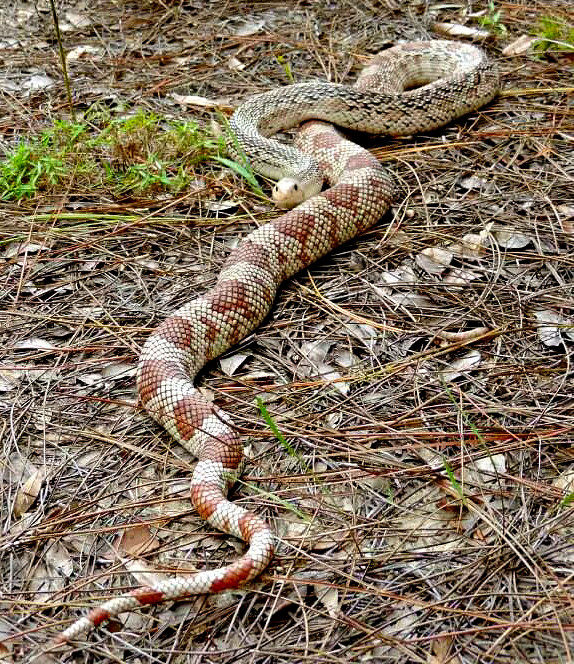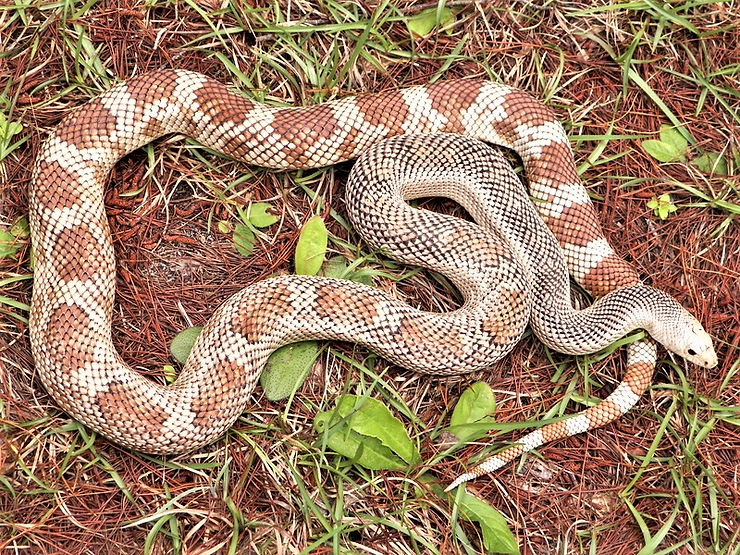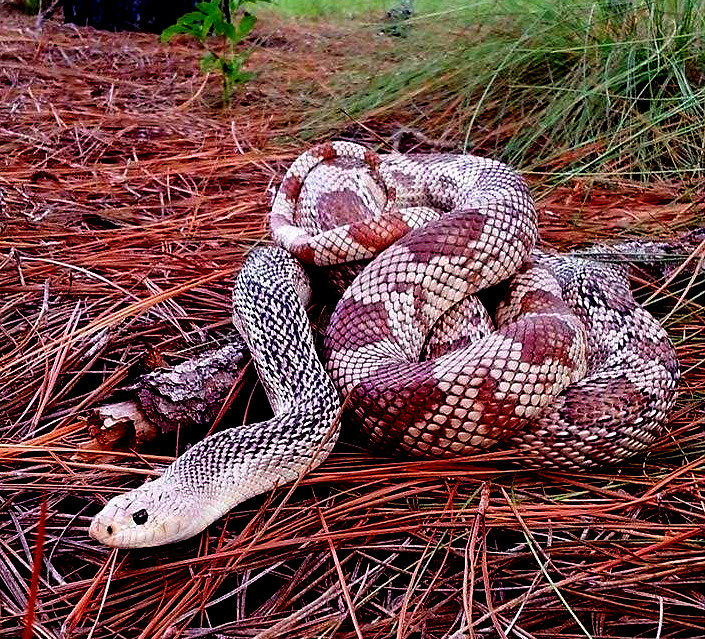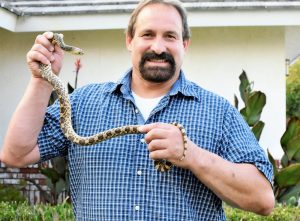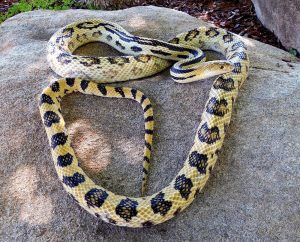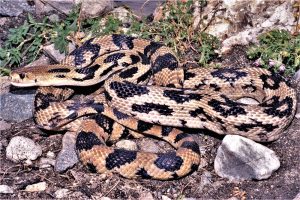Distribution: Pituophis melanoleucus mugitus: S South Carolina to Georgia and S Florida; Type locality: Palm Beach, Florida, 26.705639° -80.036419° (WGS84), Error: 8000 m.
Within its range, the habitat of these ophidians has been fragmented and altered because of man’s activities. They are found in long-leaf pine forests, dry mountain ridges, abandoned fields, sandhills, scrubland, and pine-turkey-oak woodland. They will frequent areas where there can be found plentiful food including pocket gophers and birds or eggs, and where there is protection from predators such as gopher tortoise burrows or forest debris, and also, where palatable water is readily available. Eggs are laid underground in the summer and hatch from September to October. Young hatch at approximately 18-20 inches (46-51 cm). Their pattern is similar in color to the adults; yet, more distinct, especially anteriorly.
Pituophis melanoleucus mugitus FLORIDA or SOUTHERN PINE SNAKE patternless
By Patrick Houston Briggs 2000, Courtesy Rick Smith
Says Pierson Hill, “eats southeastern pocket gopher (Geomys pinetis)
sand pine scrub in the Florida panhandle. The Florida Pine Snake is a large diurnal inhabitant of sandhill and scrub habitats throughout Florida.”
Says Kenny Wray, “An adult female Florida Pine Snake from north central Florida. Animals from the peninsula of Florida tend to lack the dark brown or black pigments of individuals from the panhandle and southern Georgia, though there is variation throughout the range and occasionally very dark specimens can be encountered from south Florida or very light (almost white) animals can be found in the western panhandle.”
Federal Status: Not Listed FL Status: State Species of Special Concern FNAI Ranks: G43 /S3 (Globally: Apparently Secure, Sub sp. Rare [Tentative Ranking]/State: Rare) IUCN Status: Not ranked.
Listed as a Threatened species in New Jersey.
Scutelation:
Mid-body Scale Rows 29-35
Supralabials 8-9
Ventrals 218-235
Infralabials 12-15
Caudals 53-67
Preoculars 1-2
Anal Single
Postoculars 3-4
Prefrontals 4
Pituophis melanoleucus mugitus SOUTHERN or FLORIDA PINE SNAKE
Gadsden County Florida adult
Digital Image by Patrick Houston Briggs
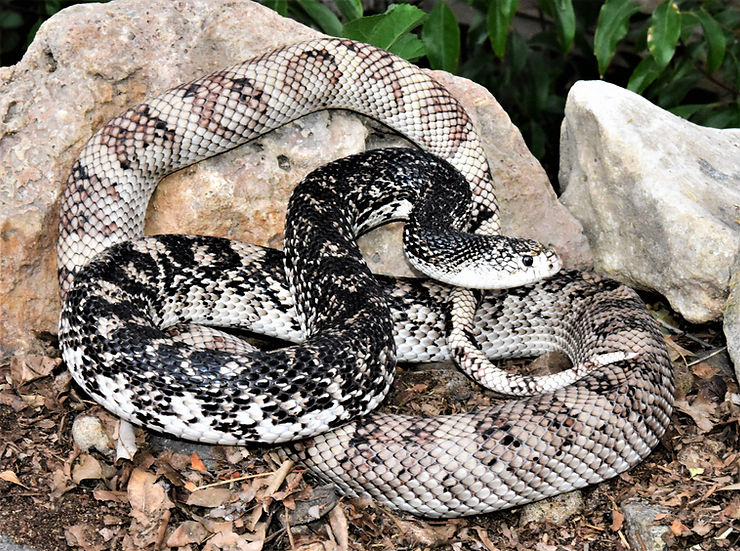
Pituophis melanoleucus mugitus SOUTHERN or FLORIDA PINE SNAKE
Gadsden County Florida adult
Digital Image by Patrick Houston Briggs
Pituophis melanoleucus mugitus SOUTHERN or FLORIDA PINE SNAKE
Gadsden County Florida adult
Digital Image by Patrick Houston Briggs
Pituophis melanoleucus mugitus SOUTHERN or FLORIDA PINE SNAKE
Clermont Lake County Florida
IMAGE BY DAVE NUNLIST
Pituophis melanoleucus mugitus FLORIDA or SOUTHERN PINE SNAKE
Digital taken by Pat Briggs
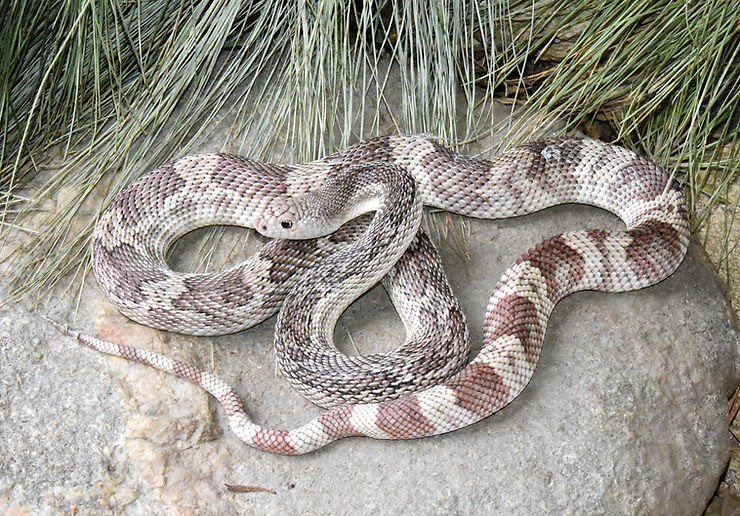
SOUTHERN or FLORIDA PINE SNAKE Pituophis melanoleucus mugitus
LEUCISTIC WHITE MORPH (Calhoun County Florida)
Image taken by SAM DAY
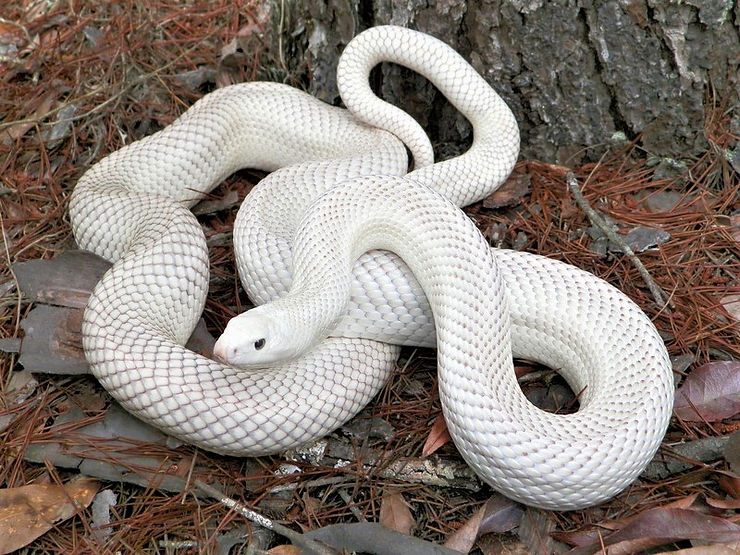
SOUTHERN or FLORIDA PINE SNAKE
Image take by Nathan Nazdrowicz
